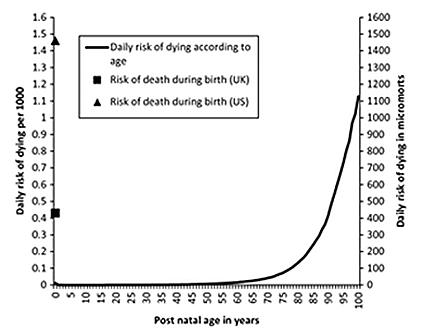Natural childbirth and homebirth advocacy are based on mistruths, half truths and outright lies.
The biggest lie of all, the foundational lie of natural childbirth and homebirth, is the idea that birth is inherently safe. I’ve been writing for years that childbirth is the single most dangerous day of the 18 years of childhood. Now a new paper published in the British Journal of Obstetrics and Gynecology shows that birth isn’t simply the most dangerous day of childhood; it is the most dangerous day of a 90+ year lifespan.
The paper is The dangers of the day of birth. One of the authors wrote about it at his personal blog.
The authors point out that most people think that childbirth is safe:
… these risks are generally perceived to be low, and as a result many parents resent the intrusiveness of hospital birth, fetal monitoring, and other recommendations…
Much of the risk of childbirth remains concentrated in a relatively short period: the day of labour and delivery. In addition, when death occurs so early in life it results in more life years lost on average than when death occurs at an older age.
We speculated that expressed on a daily risk scale, instead of as per thousand births, childbirth risks would appear very different. We aimed to calculate the risk of dying on each day of your life, and compare these risks with other activities or events that an individual may encounter. This information would then be used to calculate the loss of life expectancy sustained with death occurring on the day of birth.
What did they find?
Even with modern obstetric practice the risk of a baby dying on the day of its birth in the UK is greater than the average daily risk of death until the 92nd year of life. We have shown that this risk is comparable with many other high-risk activities, and results in many life years lost.(my emphasis)
So childbirth isn’t safe for babies. It is quite dangerous, comparable to the risk of death for the average 92 year old adult and comparable to the risk of death for those facing major surgery. The graphic representation is impressive:
The risk in the US is even higher as a result of a higher rate of risk factors and a lower rate of health care access than in the UK.
And that’s the risk when the baby has access to immediate life saving care. The risk at homebirth is higher still.
When natural childbirth or homebirth advocates tell you to trust birth, show them the graph, and see what they have to say then.
If they still tell you to trust birth, you have learned that you should never trust them.



